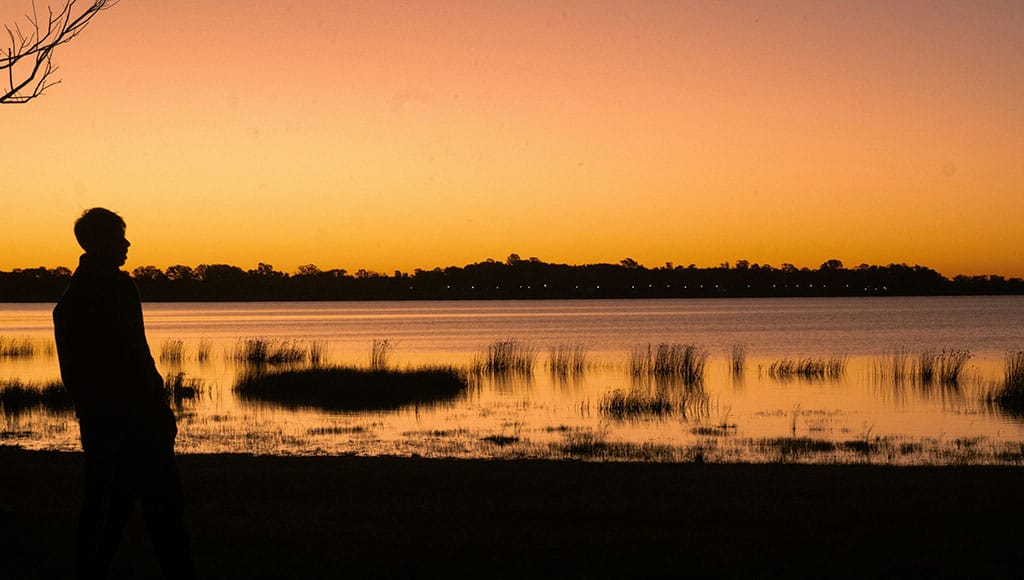As the festive glow of December dims and the novelty of January’s resolutions wears thin, February often feels like a void – a time when the excitement of the holidays has faded, but the promise of spring is still out of reach. For many, this can bring a peculiar sense of drifting, where the days seem to blend into one another, and life feels unsteady.
I know this feeling well, both personally and professionally. As a psychotherapist, I see it reflected in the lives of my clients and, at times, in my own. There’s a quiet questioning that arises during this time of year: What am I working toward? Where am I heading? It’s in these moments that I’ve learned the importance of finding anchors – those steadying forces that bring us back to ourselves when we feel most adrift.
Anchors are not grand gestures or dramatic interventions. They are often the small, consistent acts that hold us steady when the currents of life threaten to sweep us away. For me, an anchor can be as simple as stepping outside for a morning walk. There’s something about the rhythm of my footsteps on the earth, the crisp air on my face, that reminds me of my place in the world.
For others, anchors may look different. I’ve worked with people who find their calm in the gentle rituals of brewing tea, practicing yoga, or painting. It’s not the activity itself that matters, but the way it brings you into the present moment. As Thich Nhat Hanh once wrote:
“The present moment is filled with joy and happiness. If you are attentive, you will see it.”
But anchors can also be found within, through the simple act of imagining stability and calm. If you’re feeling adrift, try this visualization:
Close your eyes and imagine you’re sitting in a small, sturdy boat on a vast, calm ocean. The water stretches out in every direction, an endless blue, with no clear sign of where the shore lies. You feel the gentle rocking of the boat beneath you – a reminder of life’s unpredictability.
In your hands, you hold a heavy anchor. Take a moment to notice its solidity, the weight that grounds you, and the strength it offers. When you’re ready, gently lower the anchor into the water. Watch as the rope slips through your hands, and feel the boat become steady as the anchor takes hold on the ocean floor.
With your boat securely anchored, look around. Notice the stillness of the water, the light dancing on its surface. Take a deep breath and feel that same stillness settle within you. When you’re ready, open your eyes, knowing that you can return to this place of grounding whenever you need.
This isn’t just about personal preference; it’s about creating stability in an unstable world. Recent events, such as the fragile ceasefire in the Middle East, remind us how delicate peace can be. On both global and personal levels, life is often unpredictable. But while we may not be able to control external circumstances, we can choose how we respond. Anchors give us the grounding to pause, reflect, and act with intention rather than reacting out of fear or frustration.
I’ve often found that routine is one of the most underrated forms of self-care. It creates a sense of rhythm when the world feels chaotic. A client once shared with me that her daily ritual of lighting a candle and journaling at the end of the day helped her feel connected to herself after a period of loss. It wasn’t about solving all her problems; it was about creating a small moment of peace amidst the storm.
Connection is another powerful anchor. In my own life, reaching out to a loved one – a friend, a family member, even my dog – can remind me of the importance of relationships. These connections don’t have to fix anything; they simply remind us that we’re not alone. Viktor Frankl, a psychiatrist and Holocaust survivor, wrote that “those who have a ‘why’ to live can bear almost any ‘how.’” Sometimes, our ‘why’ is found in the faces of those we hold dear.
But perhaps the most essential anchor is self-compassion. Too often, when we feel unmoored, we turn inward with criticism: “Why am I like this? Why can’t I get it together?” But I believe that self-compassion is the foundation upon which all other anchors are built. It’s not about indulgence or avoiding responsibility – it’s about recognizing our shared humanity and treating ourselves with the kindness we extend to others.
Writing this article is one of my own anchors. It gives me the space to reflect, to connect with others who might be feeling the same way, and to remind myself of the lessons I continue to learn. If you’re feeling adrift this February, I invite you to consider your own anchors. What brings you a sense of calm? Who or what connects you to yourself? These questions don’t have to be answered immediately – they are, in themselves, anchors that guide us back to solid ground.
We all feel adrift sometimes. But in those moments, we have a choice. We can let the currents carry us aimlessly, or we can drop anchor, steady ourselves, and take a breath. Perhaps, in that breath, we’ll find the beginning of something new.
By Farah Naz
|| features@algarveresident.com
Farah Naz is a UK trained Psychotherapist of more than 30 years, and is a Clinical Hypnotherapist, with a special interest in neuroscience. She has worked with thousands of people globally for a range of issues. Farah has trained national organisations, corporate companies, doctors, teachers and health workers on psychological-related issues.
Do you have any questions you would like Farah to address in her column?
info@iamfarah.com | www.iamfarah.com
























